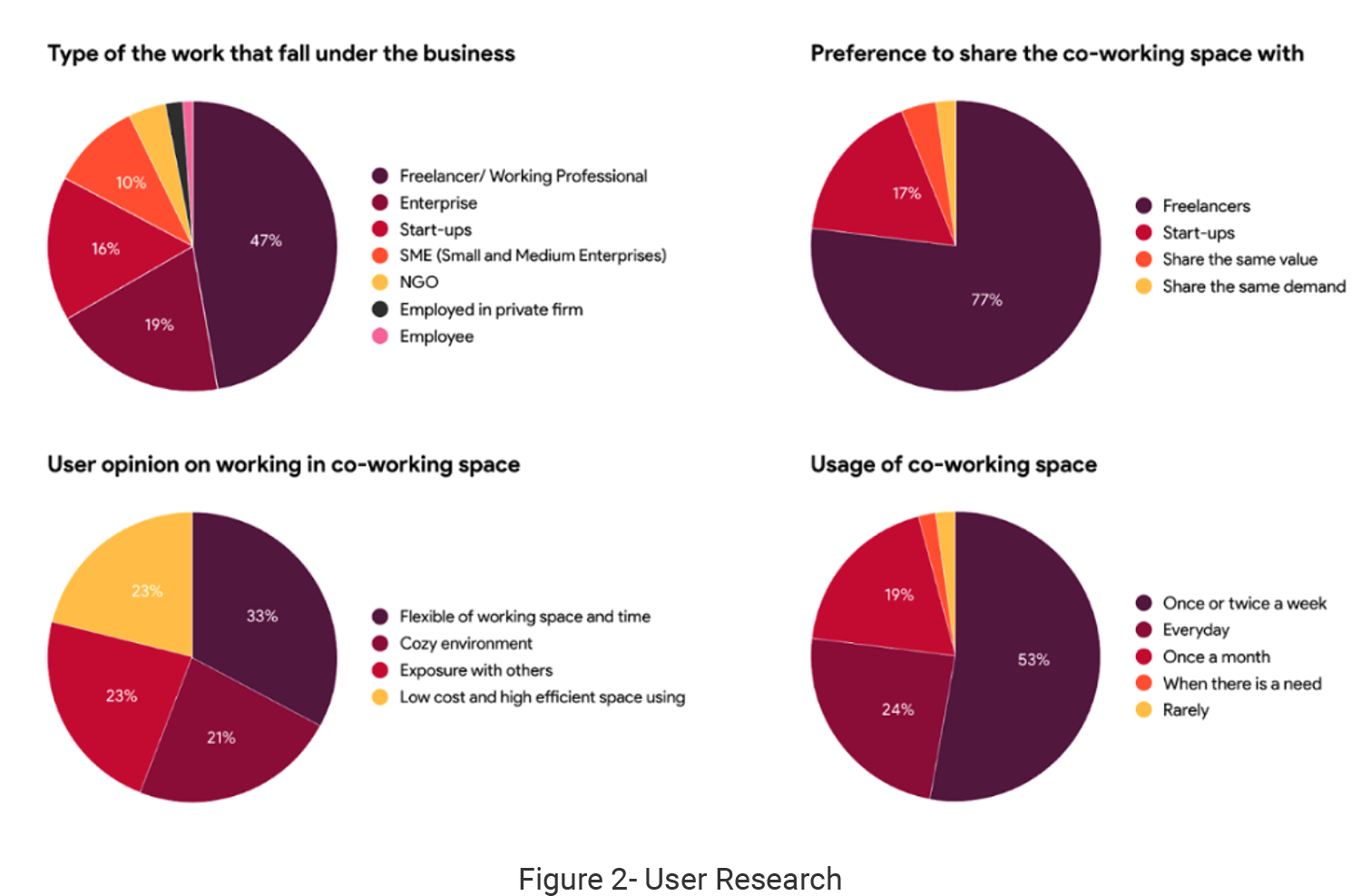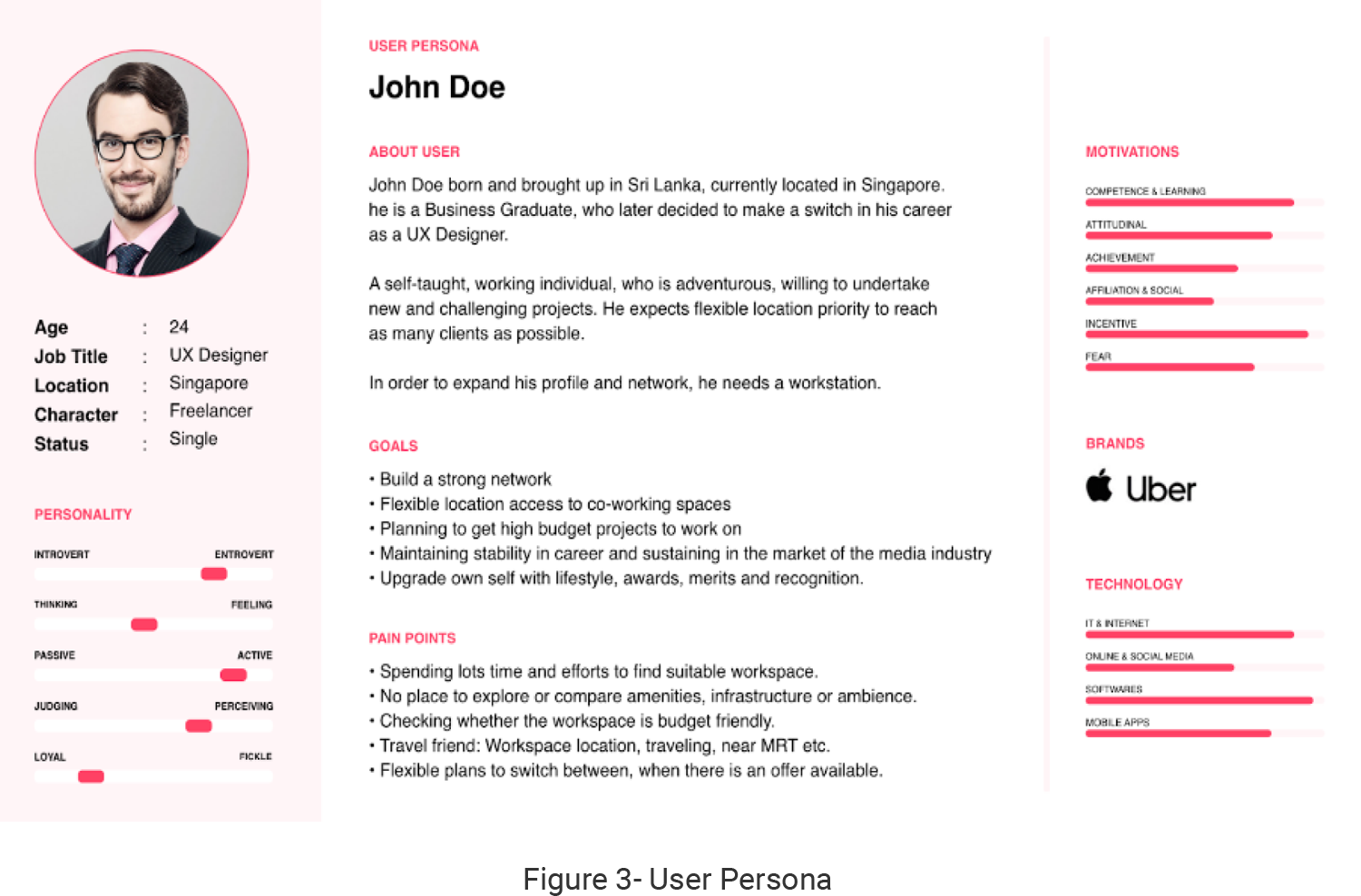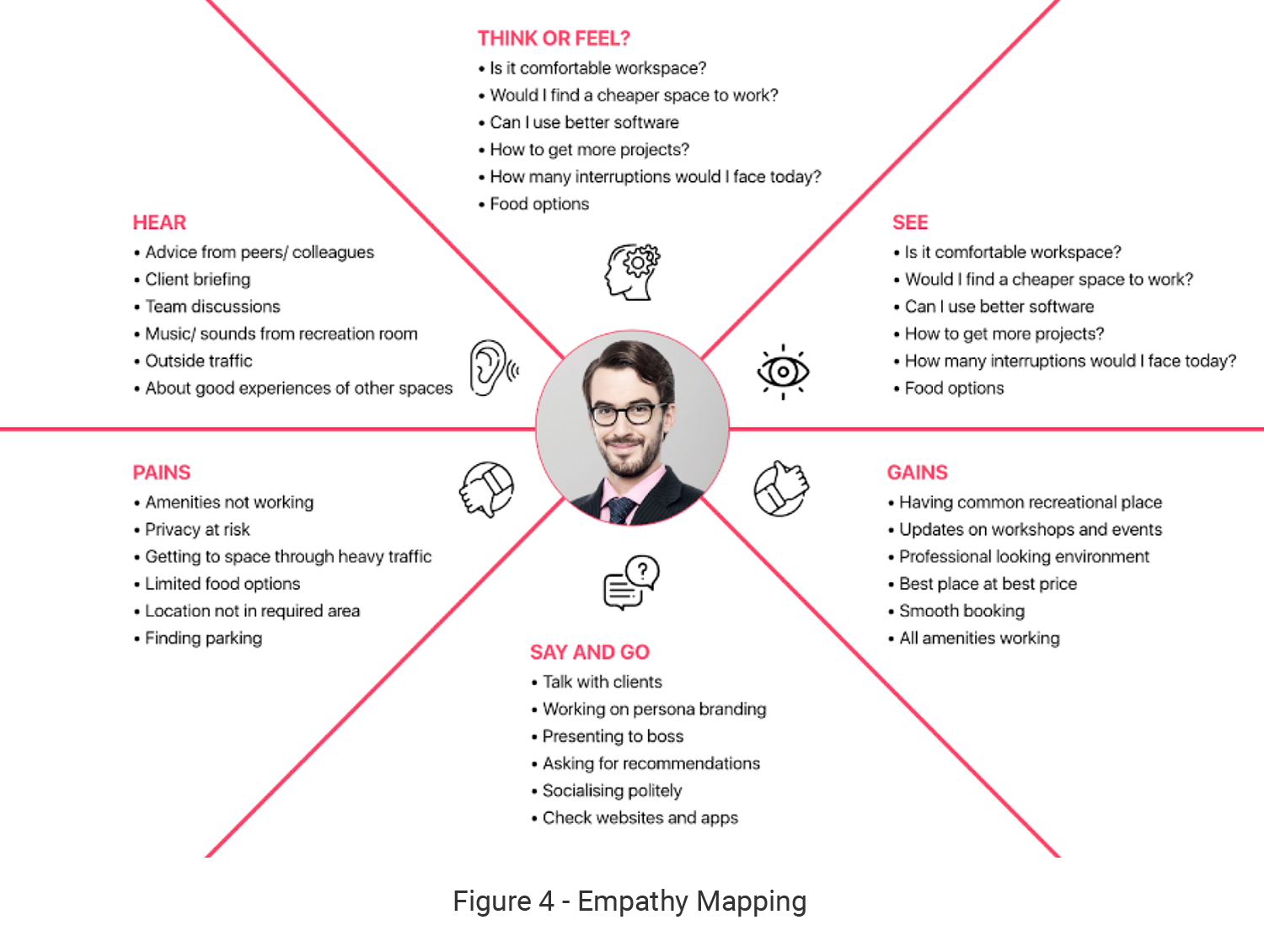Coworking Booking Platform - UX Case Study
The professional world has changed and there is a major rise in coworking spaces in the last 10 years. More and more freelancers, small businesses, startups and nonprofits are moving to coworking spaces to enjoy the flexibility and convenience of working in such spaces.
CoWorx platform is a marketplace that connects coworking spaces with those seeking an office or coworking space.
The Challenge
Users spend a lot of time & effort finding the workspaces that suit their needs. Users should be able to find a workspace with good amenities, infrastructure & good ambience. Also users should be able to compare prices of the different spaces.
The Solution
To create a web based platform that connects potential users and hosts, which will allow users to explore coworking spaces with its prices, amenities and facilities. The platform will provide the ability to book a visit to the space before booking the space (Especially for the long term and large team bookings)
HOW 1 BILLION TECH HELPED
1.Design Thinking

2. User Research
We investigated the target users from Singapore and Sri Lanka to gather insights that will help us in deriving the design process. The objective of the research is to understand their needs, behavior, attitude and pain points.
1.1.1. Qualitative Analysis
To get some qualitative insights we ran interviews focussing on people who have used some kind of coworking space in the past or fall under our target audience.
- What kind of work do you do?
- How often do you use a co-working space?
- What convinced you to decide on a co-working space over cafes/home/regular offices?
- What do you think about the concept of co-working?
- How did you find this current co-working space?
- Would you like to have all the solutions catering to your problems in a smartphone?
1.1.2. Quantitative Analysis
To quantify the opinions and behavior of the target audience, we use quantitative data gathering to generate numerical data that can be measured and analyzed. We created a survey using google form and gathered 100 responses. Below are some results from the survey.

3. User Persona
Based on the insights obtained from user interviews and surveys, one major user type was defined and a user persona & empathy mapping was created to represent those types of users.

4. Empathy Mapping

Prototyping & Testing
We presented the high fidelity wireframe screens and flows to many users and received the following insights.
- Some users wanted the option to schedule a visit, to explore the space and facility before committing.
- Many users brought up similar questions which we converted to an FAQ page.
- The current system only allowed a single booking in one instance. Users wanted the ability to make multiple bookings at a given time.
- Users found it difficult to understand how to use promo codes. This process was simplified and made more intuitive.
- Aesthetic improvements with regard to transitions, icons, images and animations were added to make the user experience more enjoyable.
Reference
- Mobile Phone Penetration in Singapore: www.statista.com/topics/5842/smartphones-in-singapore/
- What are UX Case Studies (IxDF): www.interaction-design.org/literature/topics/ux-case-studies
- User Persona: www.nngroup.com/articles/persona
- Empathy Mapping:www.nngroup.com/articles/empathy-mapping
